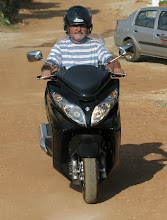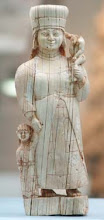An Anatolian Community : Lycians
Were the roots of Lycians in Anatolia ? The answer of this question was not firm until recent findings, yet to be confirmed by the majority of the archeology society. Under the complicated layers of the history, and with limited information from the findings, it is rather difficult to answer the question firmly. As a usual habit, civilizations had settled on the remains of previous civilizations. Thus, successors, successors of successors, had always claimed the civilization belonged to them.
As the archeology advances with new findings and decipherment of ancient texts, we now know more. As the Hittite texts holds light on the facts of ancient Anatolia, the thick cloud over Lycia has been removed partly, yet we need more evidences. These texts riveted a fact to the pages of history: in 2000 B.C. a folk called Lukka lived in south-west Anatolia, where Lycians lived, where we live now. They called themselves Trmmi and the land Trmmili. Today we still have a village in the same area, called Dirmil, on the route as suggested by the ancient road inscription found during Patara excavations. Lycians are the successors of Lukka people, pure Anatolian according to Prof.Dr. Fahri Isık. Furthermore, he suggests Lycians were inhabitants in this area much earlier than Achaeans came there. Their language was Luwian spoken at early second millennium B.C. Their goddess Kybele was not anything else but Kubaba that survived over millenniums in Anatolia, originally Sumerians adored.
A Hittite inscription found in Yalburt near Ilgın-Konya has been deciphered recently. This inscription is actually a spring worship place constructed following the instruction Tuthaliya IV who campaigned against Lukka.
“I made vows against Patar Mountain,
Gave gifts, built steles, constructed worship places”
The statement inscribed makes us guess that Tuthaliya IV gave his instruction to construct the spring worship place on the way back his home. In Patara, Doğucaasarı is a mountain just east of Patara. The acropolis on this mountain possesses a control over the town, sea, and Xanthus valley. It can be alleged that King Tuthaliya points out Doğucasarı when it says Patar Mountain. If it is correct, Doğucasarı Acropolis extends to Bronze Age on the time scale. In this age, it is well known that mountain worship was popular. Besides, the defense wall, where today a small part remains only, is similar to the walls in Hattusa.
Found in Patara excavations, Bronze Age pottery pieces and a stone axle are some other evidences for the oldness of the Lukka country.
Similarly, Xanthos is mentioned as Awarna in Hittite texts. This fact groves hopes that the Xanthos excavations, carried out by French teams, will relieve important evidences regarding pre-iron age of Lycia.
As no findings had been discovered up to date of his early studies, relating to earlier ages than Iron Age, Prof. Dr. Akurgal suggests the period between 1200 B.C and 700 B.C to be called Dark Period. New findings have already dispersed the clouds of this suggestion by Mr. Akurgal who linked the Lycian art to Greek art. Unfortunately, such claims without firm basis had not serviced the history, but caused imperfections in the written literature, which I believe the best way is to correct the pages of history with new publications.
Lycians were habited in south-west Anatolia with their deities until the first believers arrived at their land, when christianism had spread. In middle age, Lycians settled the waves in their beliefs, adopting themselves with the serenity of their new religion to be Moslem.
Were the roots of Lycians in Anatolia ? The answer of this question was not firm until recent findings, yet to be confirmed by the majority of the archeology society. Under the complicated layers of the history, and with limited information from the findings, it is rather difficult to answer the question firmly. As a usual habit, civilizations had settled on the remains of previous civilizations. Thus, successors, successors of successors, had always claimed the civilization belonged to them.
As the archeology advances with new findings and decipherment of ancient texts, we now know more. As the Hittite texts holds light on the facts of ancient Anatolia, the thick cloud over Lycia has been removed partly, yet we need more evidences. These texts riveted a fact to the pages of history: in 2000 B.C. a folk called Lukka lived in south-west Anatolia, where Lycians lived, where we live now. They called themselves Trmmi and the land Trmmili. Today we still have a village in the same area, called Dirmil, on the route as suggested by the ancient road inscription found during Patara excavations. Lycians are the successors of Lukka people, pure Anatolian according to Prof.Dr. Fahri Isık. Furthermore, he suggests Lycians were inhabitants in this area much earlier than Achaeans came there. Their language was Luwian spoken at early second millennium B.C. Their goddess Kybele was not anything else but Kubaba that survived over millenniums in Anatolia, originally Sumerians adored.
A Hittite inscription found in Yalburt near Ilgın-Konya has been deciphered recently. This inscription is actually a spring worship place constructed following the instruction Tuthaliya IV who campaigned against Lukka.

“I made vows against Patar Mountain,
Gave gifts, built steles, constructed worship places”
The statement inscribed makes us guess that Tuthaliya IV gave his instruction to construct the spring worship place on the way back his home. In Patara, Doğucaasarı is a mountain just east of Patara. The acropolis on this mountain possesses a control over the town, sea, and Xanthus valley. It can be alleged that King Tuthaliya points out Doğucasarı when it says Patar Mountain. If it is correct, Doğucasarı Acropolis extends to Bronze Age on the time scale. In this age, it is well known that mountain worship was popular. Besides, the defense wall, where today a small part remains only, is similar to the walls in Hattusa.
Found in Patara excavations, Bronze Age pottery pieces and a stone axle are some other evidences for the oldness of the Lukka country.
Similarly, Xanthos is mentioned as Awarna in Hittite texts. This fact groves hopes that the Xanthos excavations, carried out by French teams, will relieve important evidences regarding pre-iron age of Lycia.
As no findings had been discovered up to date of his early studies, relating to earlier ages than Iron Age, Prof. Dr. Akurgal suggests the period between 1200 B.C and 700 B.C to be called Dark Period. New findings have already dispersed the clouds of this suggestion by Mr. Akurgal who linked the Lycian art to Greek art. Unfortunately, such claims without firm basis had not serviced the history, but caused imperfections in the written literature, which I believe the best way is to correct the pages of history with new publications.
Lycians were habited in south-west Anatolia with their deities until the first believers arrived at their land, when christianism had spread. In middle age, Lycians settled the waves in their beliefs, adopting themselves with the serenity of their new religion to be Moslem.



